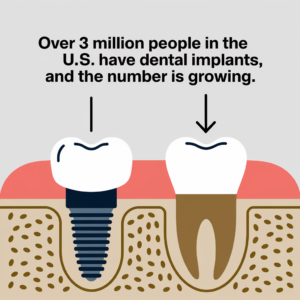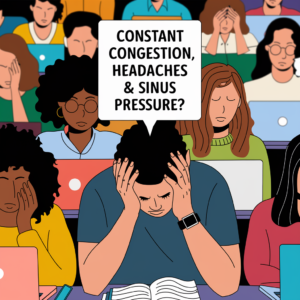
What Does Living with TMJ Feel Like?
Living with Temporomandibular Joint Disorder (TMJ) is a constant journey of managing discomfort and adapting daily routines. As someone who experiences TMJ firsthand, the impact it has on everyday life can range from mildly irritating to significantly debilitating. It starts with understanding the quirks of your own body and learning how to respond to the early signs of a flare-up.
TMJ symptoms are not just about jaw pain; they manifest in various ways including headaches, earaches, and a persistent clicking sound when moving the jaw. These symptoms often lead to difficulty in eating, speaking, and even sleeping, turning simple activities into challenges. The unpredictability of TMJ, where one day you feel fine and the next you’re overwhelmed by discomfort, requires a resilient and proactive approach to management.
At-home treatments have become my go-to strategy, offering not only relief but also a sense of control over my condition. In this article, I’ll share the effective treatments and daily adjustments that have made a significant difference in my life with TMJ. Whether you’re newly diagnosed or have been navigating this path for years, understanding and applying these at-home remedies can provide substantial relief and improve your quality of life.

What Are the Common Symptoms of TMJ?
TMJ manifests through a variety of symptoms that can affect not only your jaw but your overall quality of life. Personally, I’ve encountered several symptoms that are typical for those suffering from this disorder. The most prominent among them is jaw pain, which can range from a dull ache to sharp pains that occur during basic jaw movements like chewing or yawning. Additionally, I often experience a clicking or popping sound when opening or closing my mouth, a symptom that can be disconcerting and sometimes painful.
Headaches and earaches are also common symptoms associated with TMJ. These aren’t your typical headaches or ear pains; they feel deeply connected to the tension around my jaw. Sometimes, the pain radiates from the jaw up to the temples and down to the neck, linking several areas of discomfort through the muscles and nerves affected by TMJ.
Another challenging symptom is jaw stiffness or locking, which can be particularly frustrating in the mornings or after long periods of inactivity. This stiffness can limit how widely I can open my mouth, affecting how I eat and speak.
For those interested in understanding more about how TMJ affects more than just the jaw, I recommend reading the insightful article on TMJ’s broader impacts. It provides a comprehensive look at the diverse symptoms and their implications, helping you better understand the condition’s complexity.
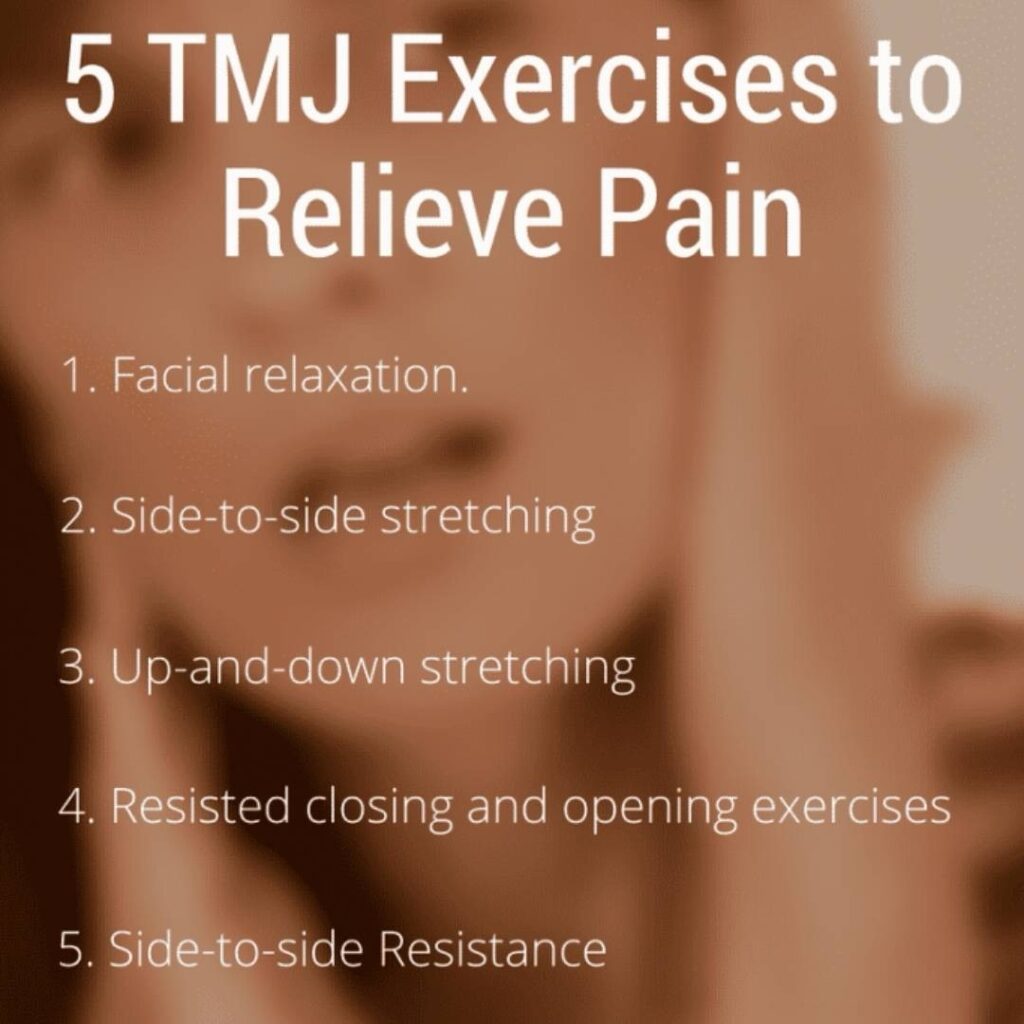
How Can Jaw Exercises Help Manage TMJ Pain?
One of the most effective strategies I’ve adopted for managing my TMJ symptoms is performing targeted jaw exercises. These exercises help in strengthening and stretching the jaw muscles, improving flexibility, and reducing tension, which in turn can alleviate pain and discomfort.
Jaw relaxation exercises are particularly beneficial. One simple technique involves placing the tip of your tongue on the roof of your mouth, behind your front teeth, then slowly opening and closing your mouth. This exercise helps relax the jaw muscles and can be done several times throughout the day to manage tension.
Stretching exercises also play a crucial role. Gently stretching your jaw can help increase mobility and relieve tightness. For example, opening your mouth as wide as comfortably possible, holding for a few seconds, and then slowly closing it. This should be done with care to avoid overextending, which can exacerbate symptoms.
Strengthening exercises are another component. These might include clenching your jaw gently for a few seconds with a soft object between your teeth, like a folded washcloth, then releasing. This can help build muscle tone without causing additional strain.
Consistently performing these exercises has significantly helped in managing my symptoms, reducing the frequency and intensity of TMJ pain. It’s important to proceed with these exercises gently and gradually, as overdoing it can lead to increased pain or discomfort. Always consult with a healthcare professional or a physical therapist specialized in TMJ disorders to ensure that you’re doing these exercises correctly and effectively.

What At-Home Treatments Provide the Best Relief for TMJ Symptoms?
Through my journey with TMJ, I’ve explored a variety of at-home treatments that have provided significant relief. These include both simple remedies and specialized tools designed to ease the discomfort associated with TMJ.
Heat and Cold Therapy: Applying heat or cold to the jaw area is one of the most immediate ways to relieve pain and reduce inflammation. I regularly use the LotFancy Face Ice Pack Wrap, which is specifically designed for TMJ relief. This wrap provides both hot and cold therapy options, allowing me to soothe my jaw muscles, reduce swelling, and alleviate pain effectively.
Over-the-Counter Pain Relievers: For acute flare-ups, over-the-counter pain relievers like ibuprofen or acetaminophen can be helpful. However, it’s important to use these medications judiciously to avoid potential side effects. For topical pain relief, I’ve found Voltaren Arthritis Pain Gel to be very effective. It targets pain directly at the source without the systemic effects of oral painkillers.
Jaw Stretching Devices: Passive stretching devices can also play a crucial role in TMJ management. The Pain Relief Device for TMJ offers a gentle way to stretch your jaw muscles, helping to reduce tightness and promote relaxation. This tool has been instrumental in my routine, especially during times when my symptoms are more pronounced.
Relaxation Techniques: Stress is a significant trigger for TMJ symptoms, so incorporating stress-reduction techniques into your daily routine is crucial. Practices such as guided meditation, deep breathing exercises, and gentle yoga can help manage stress levels, potentially reducing the frequency and severity of TMJ pain.
Implementing these treatments has not only provided relief but also improved my overall ability to manage my TMJ symptoms. It’s important to remember that what works for one person may not work for another, so it’s worth exploring different options to find what best suits your individual needs.
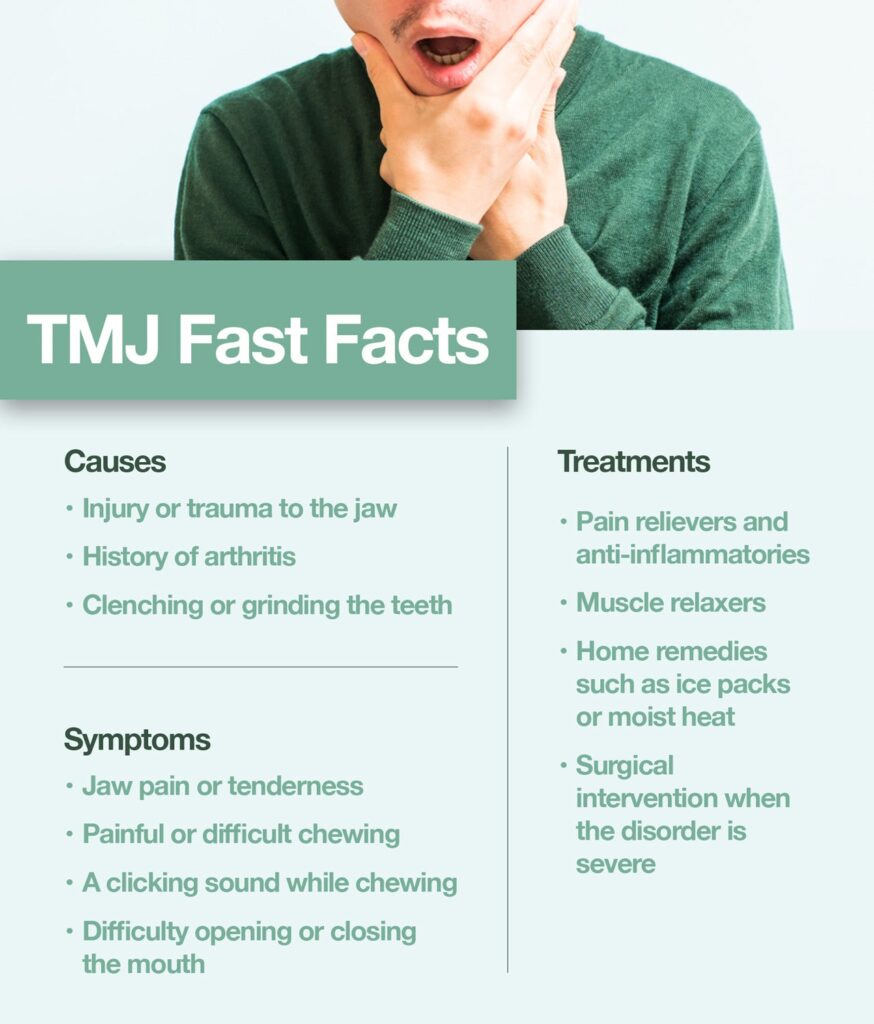
What Natural Remedies Can Be Used to Alleviate TMJ Symptoms?
In addition to mechanical and medical interventions, natural remedies have played a significant role in managing my TMJ symptoms. These remedies, which focus on holistic approaches, can be particularly appealing if you’re looking to minimize the use of medications or are seeking complementary treatments.
Essential Oils: Essential oils like lavender, peppermint, and eucalyptus have properties that can help reduce muscle tension and pain. I apply these oils topically after diluting them with a carrier oil, such as coconut oil, directly to the jaw area. This not only helps in relieving pain but also promotes relaxation.
Herbal Supplements: Supplements such as magnesium, which helps with muscle relaxation, and omega-3 fatty acids, known for their anti-inflammatory properties, can be beneficial. I’ve incorporated magnesium supplements into my daily regimen, and it has noticeably helped in reducing the frequency of my TMJ flare-ups.
Acupuncture: Although not a remedy I can apply at home, my visits to a licensed acupuncturist have been incredibly beneficial. Acupuncture can help in alleviating pain and reducing stress, which are both crucial for managing TMJ symptoms. For those considering this treatment, it’s important to seek out a practitioner who is experienced in treating TMJ disorders.
Dietary Adjustments: Adjusting your diet to include soft foods can significantly reduce strain on the jaw during eating. When my TMJ symptoms are at their peak, I switch to a diet that includes smoothies, soups, and other soft foods that require minimal chewing. This not only provides my jaw a rest but also ensures that I’m still getting adequate nutrition.
These natural remedies, when combined with the previously mentioned at-home treatments, create a comprehensive management plan that addresses TMJ symptoms from multiple angles. By integrating these methods into your daily routine, you can significantly enhance your quality of life and manage your TMJ with fewer disruptions.

How Does Stress Impact TMJ, and What Can Be Done About It?
The connection between stress and TMJ symptoms is more significant than many might realize. Stress not only exacerbates existing TMJ symptoms but can also be a primary trigger for the onset of new symptoms. As someone who has grappled with TMJ for years, managing stress has become a critical component of my overall treatment strategy.
Understanding the Impact: Stress can cause us to subconsciously clench our jaw or grind our teeth, especially during sleep. This added tension can worsen TMJ pain and discomfort, leading to more severe symptoms like headaches and increased jaw soreness. Recognizing these stress-induced habits is the first step in addressing them.
Stress Management Techniques: To combat the effects of stress on my TMJ, I’ve incorporated several effective stress management techniques into my daily routine. These include:
- Meditation and Mindfulness: Daily meditation helps calm my mind and reduce overall stress, which in turn lessens the involuntary jaw clenching.
- Regular Exercise: Physical activity is a great stress reliever and helps to dissipate tension throughout the body, including the jaw area.
- Adequate Sleep: Ensuring a regular and restful sleep schedule helps in reducing stress levels and prevents fatigue-related clenching.
Specialized Tools for Relaxation: I also use specific products designed to help relax the jaw and neck muscles. One such tool is the Occipital Release Tool for Pivotal Therapy, which has been particularly helpful. It aids in aligning the spine and relieving tension in the neck and jaw, areas often affected by TMJ.
By actively managing stress and using targeted tools to help relax my jaw and neck, I’ve noticed a significant decrease in the frequency and intensity of my TMJ symptoms. This proactive approach to stress management not only improves my TMJ condition but also enhances my overall well-being.
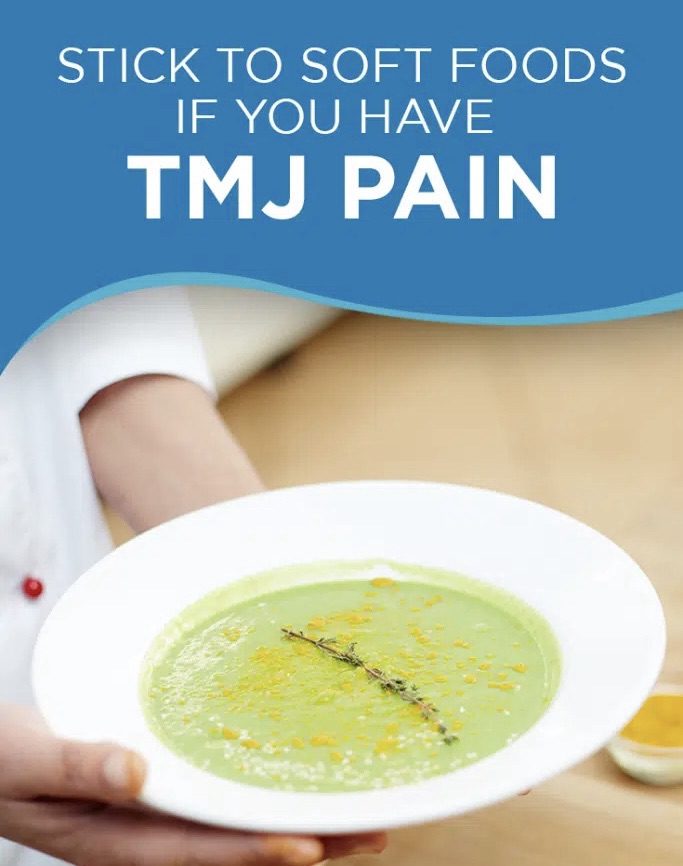
Are There Dietary Adjustments That Help with TMJ?
Dietary adjustments have proven to be a valuable part of managing my TMJ symptoms effectively. Making thoughtful choices about what I eat can significantly influence the frequency and severity of TMJ flare-ups, especially when it comes to reducing jaw strain.
Soft Food Diet: During periods when my TMJ symptoms are particularly pronounced, I shift to a soft food diet. This involves consuming foods that require minimal chewing, such as smoothies, mashed potatoes, yogurt, and soups. Not only does this help in reducing the mechanical stress on the jaw, but it also ensures that I continue to get essential nutrients without exacerbating my symptoms.
Avoiding Hard and Chewy Foods: Hard, crunchy, and chewy foods can place a lot of stress on the jaw muscles and joints. Foods like raw carrots, apples, hard candies, and chewing gum are particularly challenging. I avoid these foods as much as possible to prevent unnecessary strain and discomfort.
Staying Hydrated: Keeping well-hydrated is crucial for overall health and can also help TMJ symptoms. Adequate fluid intake ensures that the joint and muscle functions are supported properly. I make sure to drink plenty of water throughout the day to maintain optimal hydration.
Anti-Inflammatory Foods: Incorporating anti-inflammatory foods into my diet has also been beneficial. Foods rich in omega-3 fatty acids, such as salmon and flaxseeds, as well as fruits and vegetables that are high in antioxidants, help reduce inflammation throughout the body, including in the jaw area.
By making these dietary adjustments, I’ve been able to manage my TMJ symptoms more effectively. It’s a simple yet impactful way to support other treatment strategies, ensuring that my approach to managing TMJ is as comprehensive as possible. These changes, along with other treatments, have significantly improved my quality of life and my ability to manage TMJ day-to-day.

My Top Tips for Living with TMJ
Living with TMJ can be challenging, but through trial and error, I’ve discovered several strategies that have significantly eased my symptoms and improved my daily life. Here are my top tips for anyone else struggling with this condition:
- Stay Consistent with Exercises: Regular jaw exercises have been a cornerstone of my TMJ management. They help keep the jaw muscles flexible and strong, which can prevent stiffness and reduce pain.
- Use Specialized Tools: Tools like the LotFancy Face Ice Pack Wrap for cold therapy and the Pain Relief Device for TMJ for jaw stretching have been invaluable in providing relief during flare-ups.
- Manage Stress Effectively: Techniques such as meditation, regular exercise, and using relaxation tools like the Occipital Release Tool for Pivotal Therapy can significantly reduce the stress that often triggers TMJ symptoms.
- Make Dietary Adjustments: Switching to a soft food diet during severe flare-ups and avoiding chewy or hard foods helps minimize jaw strain. Including anti-inflammatory foods in your diet can also aid in reducing symptoms.
- Seek Professional Guidance: While at-home treatments are beneficial, consulting with healthcare professionals who specialize in TMJ can provide additional insights and treatment options tailored to your specific needs.
- Educate Yourself and Others: Understanding TMJ and educating those around you can make a big difference in managing your condition and receiving support. Resources like “TMJ Solutions: What Meds Really Work?” can offer valuable information about medication options.
By integrating these practices into your lifestyle, you can better manage your TMJ symptoms and lead a more comfortable and fulfilling life. Remember, each person’s journey with TMJ is unique, so it’s important to find what works best for you and adjust your strategies as needed.
As an Amazon Associate we earn from qualifying purchases through some links in our articles.

